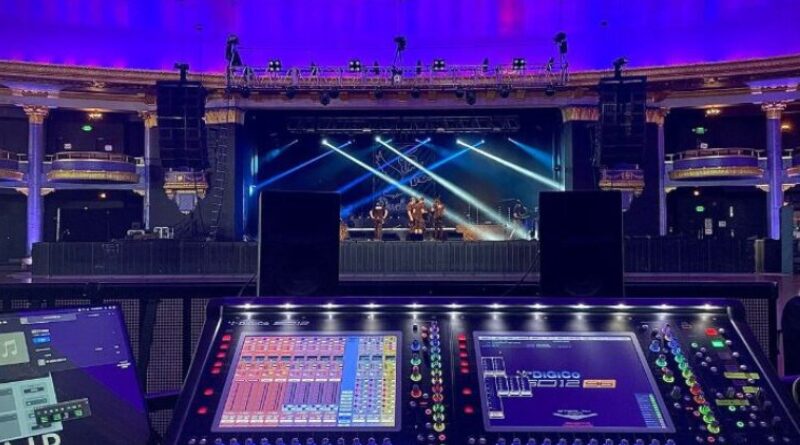Audio Mixing: Prepping With Intention

Sage Tichenor
Last month I took a brief look into some routines I’ve developed that help me feel centered to better reach my full potential as a mix engineer. In it, I mentioned the importance of solidifying your understanding of the music to achieve the most impactful, distraction-free mix. Here we highlight how I approach learning music before a show or tour to achieve this goal.
When I ask my mentors what I should do to improve my mixes, this is usually their number one comment: proactive, intentional listening. But how do you listen, and how do you commit that to memory? When it comes to tour prep, it helps me if I create playlists based on the setlist or discography of the artist, and refer to it several times a day. Outside of sitting down to actively listen, I also will let it run in the background while I’m doing other activities. I find ways to quiz myself on the arrangements, becoming aware of a few key elements throughout the song and other fundamental elements of the mix.
For me, being proactive has translated into a two-fold process. I have duality as a musician, growing up both in the bluegrass community and developing retention for pitches and rhythm from a young age and later learning how to correlate that to sheet music through classical studies. The second kind of musicianship taught me so much about how to notate musical information, long before ever becoming a tech. I’ve bridged my career as a musician and as a tech by learning how to transcribe what I hear to sheets of paper.
If you have a musical background, visualization in this manner can be powerful.
This can look like simply being able to learn how to notate the chord progressions, keys, and tempo, or just identifying what stands out throughout the listening process and subsequently writing it down. Even shorthand can be impactful. Make any and every attempt to understand the entirety of the arrangement and understand each tiny piece of it like the back of your hand.
I also find it helpful to find meaningful associations of the song. Other than the black-and-white analysis of the music, you must be able to bridge the gap between what you’re hearing to the pieces of the sound that resonate with your human experience. Research the music or artist to understand their intention and ask the musicians for information regarding the show. What is one player’s role? When are their solos, or when do they play something that they deem show critical? Maybe your steel guitar has a tiny little lick in the verse that parallels the emotions the singer is trying to convey. You should emphasize that. Show that you have a comprehension of what they’re creating. And if you have access to multitracks, you can use these to help you dissect each element and invite the players into the conversation as you prepare to help them deliver their show.
In conclusion, take time for yourself before having your hands on faders to learn the music. Doing research like this can help provide you with a toolset to make decisions quickly and with intention. After all, we have so many resources available at our fingertips and within our community that can help us achieve the goal of a distraction-free, artistic mix. Make sure you keep listening and find a method that works for you so that you can continue excelling and delivering top-tier mixes.
Back to Home
Editor's Note: At StageLync, an international platform for the performing arts, we celebrate the diversity of our writers' backgrounds. We recognize and support their choice to use either American or British English in their articles, respecting their individual preferences and origins. This policy allows us to embrace a wide range of linguistic expressions, enriching our content and reflecting the global nature of our community.
🎧 Join us on the StageLync Podcast for inspiring stories from the world of performing arts! Tune in to hear from the creative minds who bring magic to life, both onstage and behind the scenes. 🎙️ 👉 Listen now!
